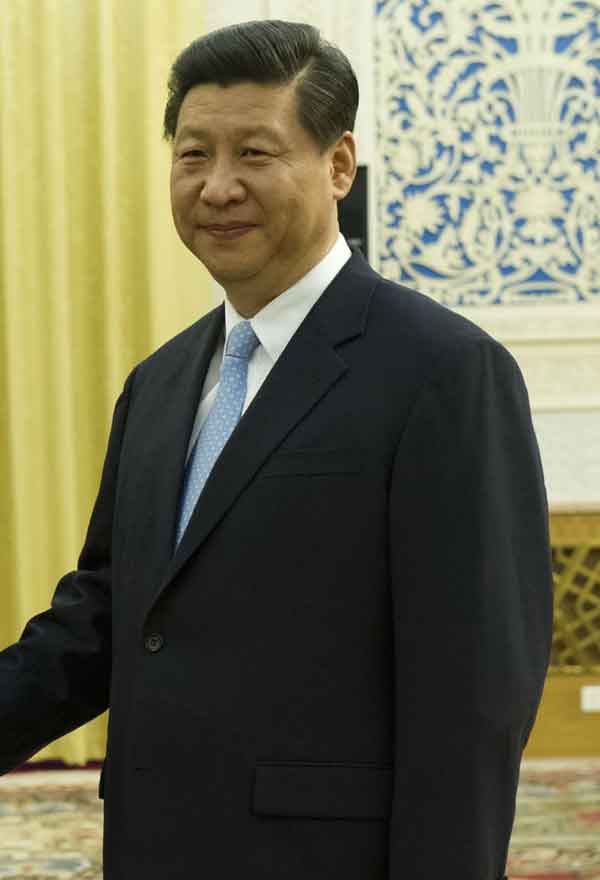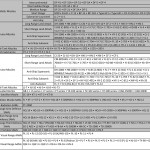Unlike the era of Mao Zedong, where People’s Liberation Army (PLA) aimed at ‘Protracted War’ fought on Chinese soil, with a heavy reliance on guerrilla warfare, China in 21st century perceives war differently. Taking a departure from Mao, in Beijing’s current perspective, future wars entail: to be shorter, perhaps lasting only one campaign; will almost certainly not entail the occupation of China, although Chinese political, economic, and military centers are likely to be attacked; and will involve joint military operations across land, sea, air, cyberspace and outer space, and the application of advanced technology, especially information technology.[i]This calculus is driven by China’s changing perception of its security environment and its understanding of the evolution of modern warfare. What lies at the core is the element of ‘information’ that has become the cardinal element in fighting modern warfare.
Given PLA’s assessment of modern warfare techniques as employed in cases such as Operation Desert Storm, NATO operations in the Balkans, and the wars in Afghanistan and Iraq, China has transformed its strategic outlook from “winning local wars in conditions of modern technology, particularly high technology” in 1993 to that of “winning local wars under conditions of informationisation” in 2004 to that of “winning informationised local wars” in 2015.This transition exemplifies China’s departure from the old tactic of mass mobilisation and preparation for all-out warfare. In this regard, Chinese President Xi Jinping seeks to enhance PLA’s “combat readiness” and make it a “powerful force that is always ready for the fight, capable of combat and sure to win”.[ii]Under this outcome oriented approach of Xi, the only option for China is to win at all circumstances.
At the core is the goal of PLA becoming ‘an army that not only can fight but also win wars’. In this pretext, Xi Jinping’s ‘fight and win’ logic to China’s military preparedness is driven by a two-fold perspective:[iii] First, the core objective to “win informationised local wars”, which acts as the basic point to call for combat readiness. Second, such advanced capabilities are aimed at increasing the PLA’s ability to carry out joint operations on a modern high-tech battlefield. In this, the principle of “active defense”[iv] (jijifangyu积极防御),
acts as the essence of “CPC’s military strategic thought”. To which, PLA under Xi confirms to a policy that says: “We (China) will not attack unless we are attacked, but we will surely counterattack if attacked” and further added that “China will never seek hegemony or expansion”.[v]In applying this logic to China’s new security situation, Xi’s agenda calls for making the PLA a ‘combat force’ in order to transform from the “regional defensive type to the full-spectrum combat type, so as to build a powerful, modern and new-type Army”[vi] – which is capable not only to fight but most importantly, efficient in winning wars. Xi’s ‘fight and win’ logic holds three significant implications: first, it reflects the Chinese confidence as well as determination to safeguard the nation’s sovereignty, security and development interests; and second, it contributes to Xi Jinping’s Chinese Dream of a ‘strong army’, and finally, it strengthens China’s uncompromising stance towards asserting and expanding its rights and interests. This strategic calculus of Xi further clarifies China’s departure from Deng Xiaoping’s dictum of “keeping a low profile”(taoguang yang hui, 韬光养晦), as China under Xi aims at “striving for achievement” (fen fa you wei, 奋发有为).
What prompts Xi to push for PLA’s combat readiness? To note, it is imperative for China as, since its war with Vietnam in 1979, China has not fought a real war. This has contributed to China’s long-standing inexperience in war-fighting, and more specifically, necessitated the need become combat ready to fight modern warfare. This is further necessitated in order to defend its status of being the world’s number two economy. Given this contingency, China under Xi aspires to build a security maximising state, which aims at building its military means to meet the end of becoming a strong national security state. In doing so, Xi has envisioned a ‘World Class Military’- which will help elevate PLA’s role in the country’s future given China’s forceful quest in securing its strategic space both regionally as well as globally. To pursue such a goal, Xi seeks to make the PLA combat ready to quell the risks of the fog of war.
With regard to India, Xi’s quest for ‘fight and win’ does hold significant implications. Wherein, the unresolved boundary acts as the trigger point, where China’s combat capabilities can be well-tested. The red alarms loom large given the 2017 Doklam standoff that brought the two countries to a point of confrontation. To say so, as Beijing officially issued a warning, which stated that “China would take all measures to uphold its territorial integrity”.[vii] This further exemplifies China’s non-compromising attitude in safeguarding its sovereignty and territorial integrity. If not another Doklamlike scenario, but China will routinely test India’s resolve along the disputed boundary. For as long as the boundary question remains unresolved, the tensions will always be high. Furthermore, China’s combat readiness adds to this phenomenon as Beijing will be more assertive in securing its claims, and not diffident. Hence, for India, the watchword is ‘how to quell the future risks’ as China gears up to ‘fight and win’.
References
[i] Dean Cheng (2011), “China’s Active Defense Strategy and Its Regional Impact”, The Heritage Foundation, 01 February 2011, URL: https://www.heritage.org/testimony/chinas-active-defense-strategy-and-its-regional-impact (Accessed on 14 August 2018).
[ii] “Xi stresses real combat training”, Xinhuanet, 03 January 2018, URL: http://www.xinhuanet.com/english/2018-01/03/c_136870001.htm (Accessed 20 September 2018).
[iii] Amrita Jash (2018), “With H-6G Bomber, China Gears Up to Win Informationised Local Wars”, CLAWS FOCUS, 28 January 2018, URL: http://www.claws.in/1863/with-h-6g-bomber-china-gears-up-to-win-informationised-local-wars-amrita-jash.html (Accessed on 20 September 2018).
[iv]The key components of active defence entail: First, a defensive military strategy, which permits attacks only after having first been attacked. However, attacks could also include pre-emptive or even preventive strikes, with the goal of defending CCP rule, national sovereignty, and territorial integrity; second, a “forward defence” posture; and third, an operational doctrine that focuses on the opposing force’s weaknesses, initiated only when “time and conditions… favor [PLA] forces, and which does not limit the counter-offensive in terms of time, space, or response”. See, Richard Bitzinger (2011), “Modernising China’s Military, 1997-2012”, China Perspectives, No. 4, p. 8, URL: file:///C:/Users/JASH/Downloads/chinaperspectives-5701.pdf (Accessed on 20 September 2018).
[v]The State Council of the People’s Republic of China, “China’s Military Strategy”, 27 May 2015, URL: http://english.gov.cn/archive/white_paper/2015/05/27/content_281475115610833.htm (Accessed on 20 September 2018).
[vi]Ministry of National Defense of the People’s Republic of China (2016), “China establishes Rocket Force and Strategic Support Force”, 1 January 2016, URL: http://eng.mod.gov.cn/DefenseNews/2016-01/01/content_4634924.htm (Accessed 20 September 2018).
[vii] Ministry of Foreign Affairs of the People’s republic of China (2017), “Foreign Ministry Spokesperson GengShuang’s Regular Press Conference on July 3, 2017”, 04 July 2017, URL: http://www.fmprc.gov.cn/mfa_eng/xwfw_665399/s2510_665401/t1475054.shtml (Accessed on 20 September 2018).





